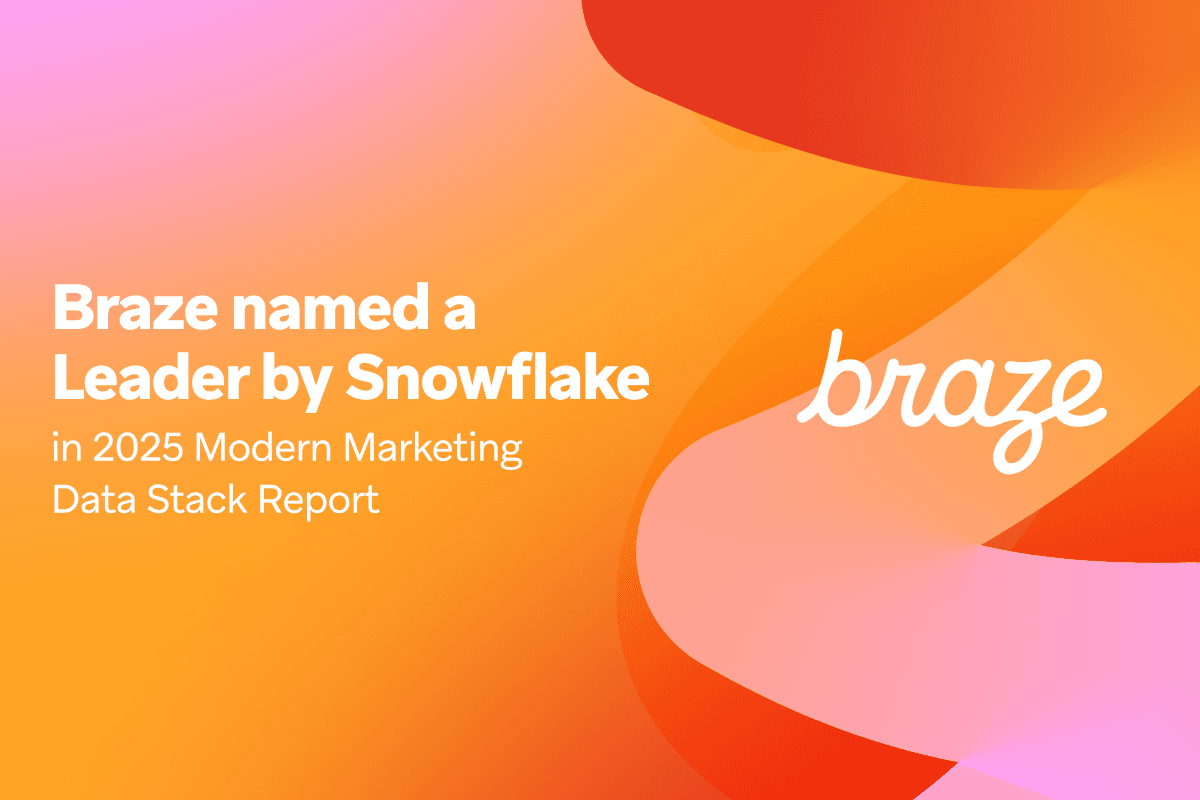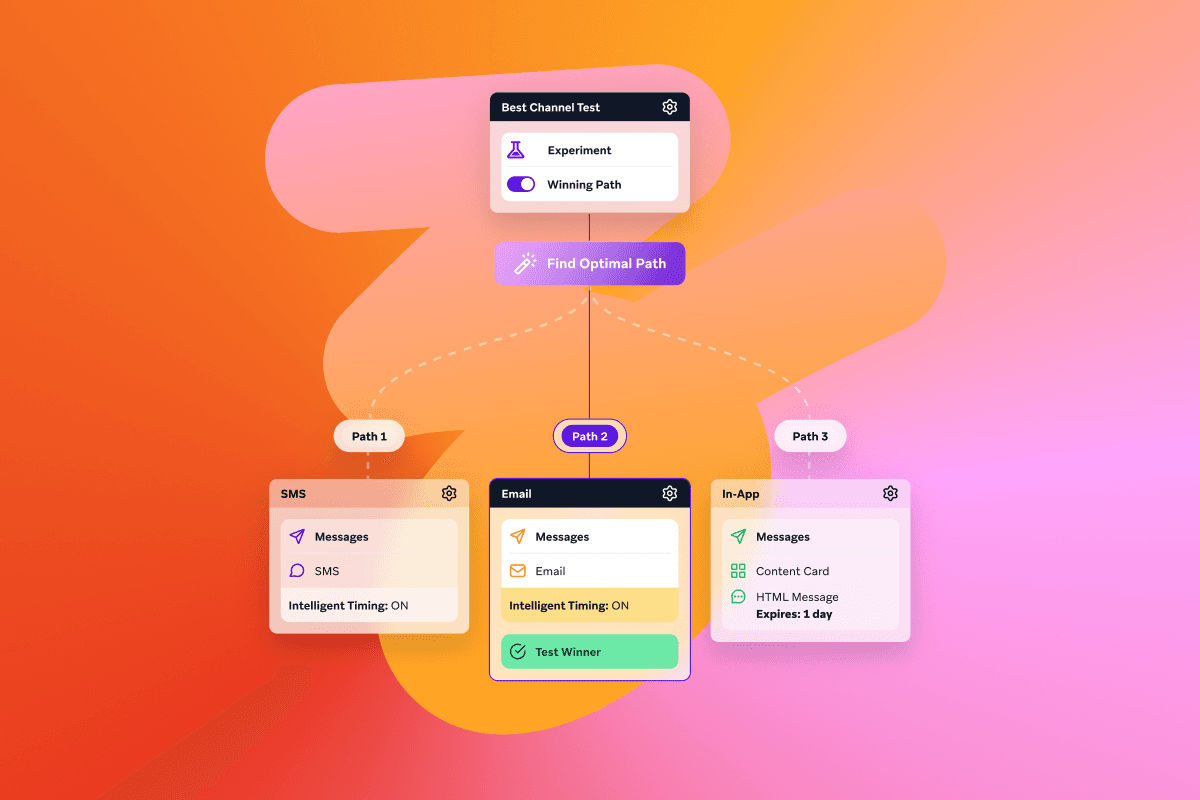How Transparency Can Help Consumers Understand the Balance Between Privacy and Personalization
Published on August 01, 2022/Last edited on August 01, 2022/6 min read


Team Braze
Today's consumers are increasingly thoughtful when it comes to how they share personal data and engage with apps, websites, and marketing messages. As consumers’ focus on privacy and the ways in which brands are using their data grows more intense, transparency around these topics has become the gold standard. However, given negative public perceptions around the tracking of consumer data, brands still need to be mindful of how they approach this topic.
A lack of understanding around why certain types of data are being gathered and how that data is ultimately being used have contributed to consumer confusion and mistrust. But while not every brand is conscientious about the information they gather and use—and some approaches, such as invasive retargeting ads, can be seen as "creepy" by consumers—marketers are generally pulling in consumer information with the goal of providing a more relevant, meaningful brand experience. In a nutshell, it all ties back to personalization: That is, brands using what they know about a customer's preferences and behavior to offer a tailored experience that meets or exceeds expectations.
To uncover consumer sentiment around data privacy and consent as well as consumer preferences when it comes to “opt-in/opt-out” capabilities associated with data collection, Braze—in partnership with Dynata—conducted a survey in June 2022 of 1,000 U.S. adults, aged 18+. Our aim was to gain an understanding of how consumers’ expectations around personalization of experience align with their level of willingness to share their information with brands. That survey found that:
- 61% of respondents say they are very concerned with protecting their information online.
- 49% of respondents note that data privacy—or the feeling that their data is protected—is of more value to them than personalization, yet 53% said they expect a unique and personalized experience every time they engage with a brand no matter the medium (in-person, via social, chat feature, etc.).
- When asked how often they click “opt-out” or “ask not to track” in an app, more than a third (39%) say they always do, while more than half (52%) say they sometimes do. However, nearly half (47%) say they are most likely to “accept all cookies,” when prompted before browsing a website.
- Top reasons consumers cited for allowing tracking or cookies, include:
- Access to loyalty perks or programs (52%)
- Interested in a personalized experience and communications (37%)
- They found it too time-consuming to figure out how to opt out (24%)
- Retail (58%), financial services (49%), and streaming services (44%) are the apps that respondents say they’re most likely to allow to gather personal data.
- When asked how aware consumers are of what they’re consenting to when they opt-in to sharing data, more than half responded “I am sometimes aware” (53%), over “I am always aware” (38%) and “I am never aware” (9%).
What does this mean for brands?
Consumers want their privacy, but expect personalization—and it’s almost a 50/50 split between these two ideas. While nearly half of surveyed consumers say data privacy/protection has more value to them than personalization, slightly more than half still expect a personalized experience with a brand every time they engage. This means brands need to find ways to build trust with consumers on both sides of the scale.
Brands also need to get more creative in how they engage with consumers. What you are offering, particularly with tools like loyalty programs, can help build more long-term relationships with customers. In fact, more than half of surveyed consumers will allow their data to be collected and tracked because they want access to loyalty perks or programs. This is important to keep in mind as brands and consumers alike continue to face high rates of inflation and other economic challenges. Getting this balance right is critical across industries from food service to streaming to retail and more.
The trend going forward is transparency
Our survey found a notable difference between apps and websites when it came to consumers’ data opt-in/opt-out behavior. When asked how often they choose to opt-out or click “ask not to track” when prompted in an app, 39% of survey respondents say they always do this. But when we asked respondents what action they are most likely to take when given prompts around accepting cookies before browsing a website, 47% say they are most likely to “accept all cookies” when prompted, as opposed to only 21% choosing to “view more options.”
The “opt-out” or “ask not to track” option that most mobile apps provide gives users a more direct and simple one-click way to not share their data. With websites, we do see something a bit different. Following the advent of the EU’s General Data Protection Regulation (GDPR) and privacy laws in California, Colorado and Virginia, more and more websites are asking web visitors to “accept all cookies” or “view more options” before allowing them to access a webpage. Our survey found that nearly a quarter of respondents find it too time consuming to figure out how to opt out of sharing cookies, suggesting that the UX difference in privacy prompts on mobile apps and the web might be part of the reason for the disparity between apps and websites when it comes to user opt-in/opt-out behavior.
How can brands respond? The smart move is to start priming users before asking to collect any data. Primers are targeted campaigns—usually sent via in-app messaging or in-browser messaging on mobile and the web, respectively—that are surfaced by brands to “prime” recipients with context and information around why they’re being asked for their data and how it will be used to support their customer experience. What does that look like? If your brand intends to use consumers’ browsing data to provide them with better, more targeted product recommendations, you should be clearly communicating that use case and the value it will provide to give recipients an affirmative reason to opt in.
Final Thoughts
As consumers increasingly expect a unique and personalized experience every time they engage with a brand, it will be crucial for brands to create more transparency around what they track and how that improves each individual user experience. This will further help consumers understand how their choices around opting-in/out or accepting cookies will ultimately affect the way a brand is able to build and tailor customer experiences.
Interested in learning more about personalization and how it can support exceptional brand experiences? Check out the Braze personalization guide.
Related Tags
Be Absolutely Engaging.™
Sign up for regular updates from Braze.
Related Content
View the Blog
For the Third Year Running, Braze Cited as a Leader in Snowflake’s 2025 Modern Marketing Data Stack Report

Team Braze

How Papa Johns UK Serves Up Tasty Customer Experiences

Team Braze

How Braze Raises the Bar for Customer Engagement Experimentation
